Towards the Future of Sustainable Mobility: Results from a European Survey on (Electric) Powered-Two Wheelers
Abstract
:1. Introduction
1.1. PTW and E-PTW Use in Europe
1.2. Consumer Adoption of E-PTWs
2. Materials and Methods
2.1. Development of the Questionnaire
2.2. Questionnaire Structure
2.3. Statistical Analysis
- Age category/generation (2): younger vs. elderly. To assess potential differences between younger and elderly participants, a median split has been conducted that categorized “younger participants” below the age of 45 and “elderly participants” above the age of 45 (included).
- PTW ownership (2): yes vs. no. Regardless of ownership, people without their own PTW might still have access to a PTW under certain circumstances.
3. Results
3.1. Panel Description
3.2. Mobility Patterns
3.3. Opinion on Electric Vehicles
4. Discussion
Limitations
5. Conclusions
Author Contributions
Funding
Institutional Review Board Statement
Informed Consent Statement
Data Availability Statement
Acknowledgments
Conflicts of Interest
References
- Haworth, N. Powered two wheelers in a changing world—Challenges and opportunities. Accid. Anal. Prev. 2010, 44, 12–18. [Google Scholar] [CrossRef] [PubMed] [Green Version]
- European Road Safety Observatory. Power Two Wheelers; European Commission: Brussels, Belgium, 2018. [Google Scholar]
- Yannis, G.; Vlahogianni, E.; Golias, J.; Saleh, P. Road Infrastructure and Safety of Power Two Wheelers. In Proceedings of the 12th World Conference on Transport Research, Lisbon, Portugal, 11–15 July 2010. [Google Scholar]
- Theofilatos, A.; Yannis, G. A review of powered-two-wheeler behaviour and safety. Int. J. Inj. Control Saf. Promot. 2015, 22, 284–307. [Google Scholar] [CrossRef] [PubMed]
- Jou, R.-C.; Chen, T.-Y. Factors affecting public transportation, car, and motorcycle usage. Transp. Res. Part. A Policy Pract. 2014, 61, 186–198. [Google Scholar] [CrossRef]
- Marquet, O.; Miralles-Guasch, C. City of Motorcycles. On how objective and subjective factors are behind the rise of two-wheeled mobility in Barcelona. Transport. Policy 2016, 52, 37–45. [Google Scholar] [CrossRef]
- Jamson, S.; Chorlton, K. The changing nature of motorcycling: Patterns of use and rider characteristics. Transp. Res. Part. F Traffic Psychol. Behav. 2009, 12, 335–346. [Google Scholar] [CrossRef]
- Mersky, A.C.; Sprei, F.; Samaras, C.; Qian, Z.S. Effectiveness of incentives on electric vehicle adoption in Norway. Transp. Res. Part. D Transport. Environ. 2016, 46, 56–68. [Google Scholar] [CrossRef] [Green Version]
- European Commission CO₂ Emission Performance Standards for Cars and Vans (2020 Onwards). Available online: https://ec.europa.eu/clima/policies/transport/vehicles/regulation_en#tab-0-0 (accessed on 16 April 2021).
- SafetyNet, Powered Two Wheelers. 2009. Available online: https://ec.europa.eu/transport/road_safety/sites/default/files/specialist/knowledge/pdf/powered_two_wheelers.pdf (accessed on 2 June 2021).
- ACEM. ACEM Statistical Release: Motorcycles Registrations in the European Union Grew by 8% in 2019; Association des Constructeurs Européens de Motocycles: Brussels, Belgium, 2020; Available online: https://www.acem.eu/motorcycles-registrations-in-the-european-union-grew-by-8-in-2019 (accessed on 2 June 2021).
- ACEM. ACEM Press Release-Registrations of Motorcycles and Mopeds in Largest European Mar-Kets Slightly Rose again after the First Months of the Year; Association des Constructeurs Européens de Motocycles: Brussels, Belgium, 2020; Available online: https://www.acem.eu/registrations-of-motorcycles-and-mopeds-in-largest-european-markets-slightly-rose-again-after-the-first-months-of-the-year (accessed on 2 June 2021).
- Blackman, R.; Haworth, N. A Qualitative Exploration of the Attitudes and Experiences of Moped and Scooter Riders. In Proceedings of the Transportation Research Board 89th Annual Meeting Compendium of Papers; Transportation Research Board: Washington, DC, USA, 2010; pp. 1–16. [Google Scholar]
- Coxon, I. Journey to Work, Buzz or Bore? A Phenomenological, Ethnographic Study of Motor Scooter Riders in Sydney. In Proceedings of the 25th Australasian Transport Research Forum, Canberra, Australia, 2–4 October 2002. [Google Scholar]
- Guerra, E. Electric vehicles, air pollution, and the motorcycle city: A stated preference survey of consumers’ willingness to adopt electric motorcycles in Solo, Indonesia. Transp. Res. Part D Transp. Environ. 2019, 68, 52–64. [Google Scholar] [CrossRef]
- Rogers, N. Trends in Motorcycles Fleet Worldwide. In Proceedings of the International Transport Forum—Workshop on Motorcycling Safety, Lillehammer, Norway, 10 June 2008; Organisation for Economic Co-operation and Development: Lillehammer, Norway, 2008. [Google Scholar]
- Delhaye, A.; Marot, L. The Motorcycling Community in Europe. 2015. Available online: https://ec.europa.eu/transport/road_safety/sites/default/files/pdf/projects_sources/riderscan_d9.pdf (accessed on 2 June 2021).
- Eurostat Ageing Europe—Statistics on Population Developments. Available online: https://ec.europa.eu/eurostat/statistics-explained/index.php/Ageing_Europe_-_statistics_on_population_developments#Older_people_.E2.80.94_population_overview. (accessed on 2 June 2021).
- Coffman, M.; Bernstein, P.; Wee, S. Electric vehicles revisited: A review of factors that affect adoption. Transp. Rev. 2017, 37, 79–93. [Google Scholar] [CrossRef]
- Egbue, O.; Long, S. Barriers to widespread adoption of electric vehicles: An analysis of consumer attitudes and perceptions. Energy Policy 2012, 48, 717–729. [Google Scholar] [CrossRef]
- Rezvani, Z.; Jansson, J.; Bodin, J. Advances in consumer electric vehicle adoption research: A review and research agenda. Transp. Res. Part D Transp. Environ. 2015, 34, 122–136. [Google Scholar] [CrossRef] [Green Version]
- Liao, F.; Molin, E.; van Wee, B. Consumer preferences for electric vehicles: A literature review. Transp. Rev. 2017, 37, 252–275. [Google Scholar] [CrossRef] [Green Version]
- Eccarius, T.; Lu, C.-C. Powered two-wheelers for sustainable mobility: A review of consumer adoption of electric motorcycles. Int. J. Sustain. Transp. 2020, 14, 215–231. [Google Scholar] [CrossRef]
- Ajzen, I. The theory of planned behavior. Organ. Behav. Hum. Decis. Process. 1991, 50, 179–211. [Google Scholar] [CrossRef]
- Rogers, E.M. Diffusion of Innovations; Free Press: New York, NY, USA, 2003; Volume 5. [Google Scholar]
- Davis, F.D.; Bagozzi, R.P.; Warshaw, P.R. User acceptance of computer technology: A comparison of two theoretical models. Manag. Sci. 1989, 35, 982–1003. [Google Scholar] [CrossRef] [Green Version]
- Zhu, L.; Song, Q.; Sheng, N.; Zhou, X. Exploring the determinants of consumers’ WTB and WTP for electric motorcycles using CVM method in Macau. Energy Policy 2019, 127, 64–72. [Google Scholar] [CrossRef]
- EMotion Consortium Electric Mobility in L-Category Vehicles for All Generations. Available online: https://www.emotion-project.at/ (accessed on 16 April 2021).
- Noel, L.; de Rubens, G.Z.; Sovacool, B.K.; Kester, J. Fear and loathing of electric vehicles: The reactionary rhetoric of range anxiety. Energy Res. Soc. Sci. 2019, 48, 96–107. [Google Scholar] [CrossRef]
- Okada, T.; Tamaki, T.; Managi, S. Effect of environmental awareness on purchase intention and satisfaction pertaining to electric vehicles in Japan. Transp. Res. Part D Transp. Environ. 2019, 67, 503–513. [Google Scholar] [CrossRef]

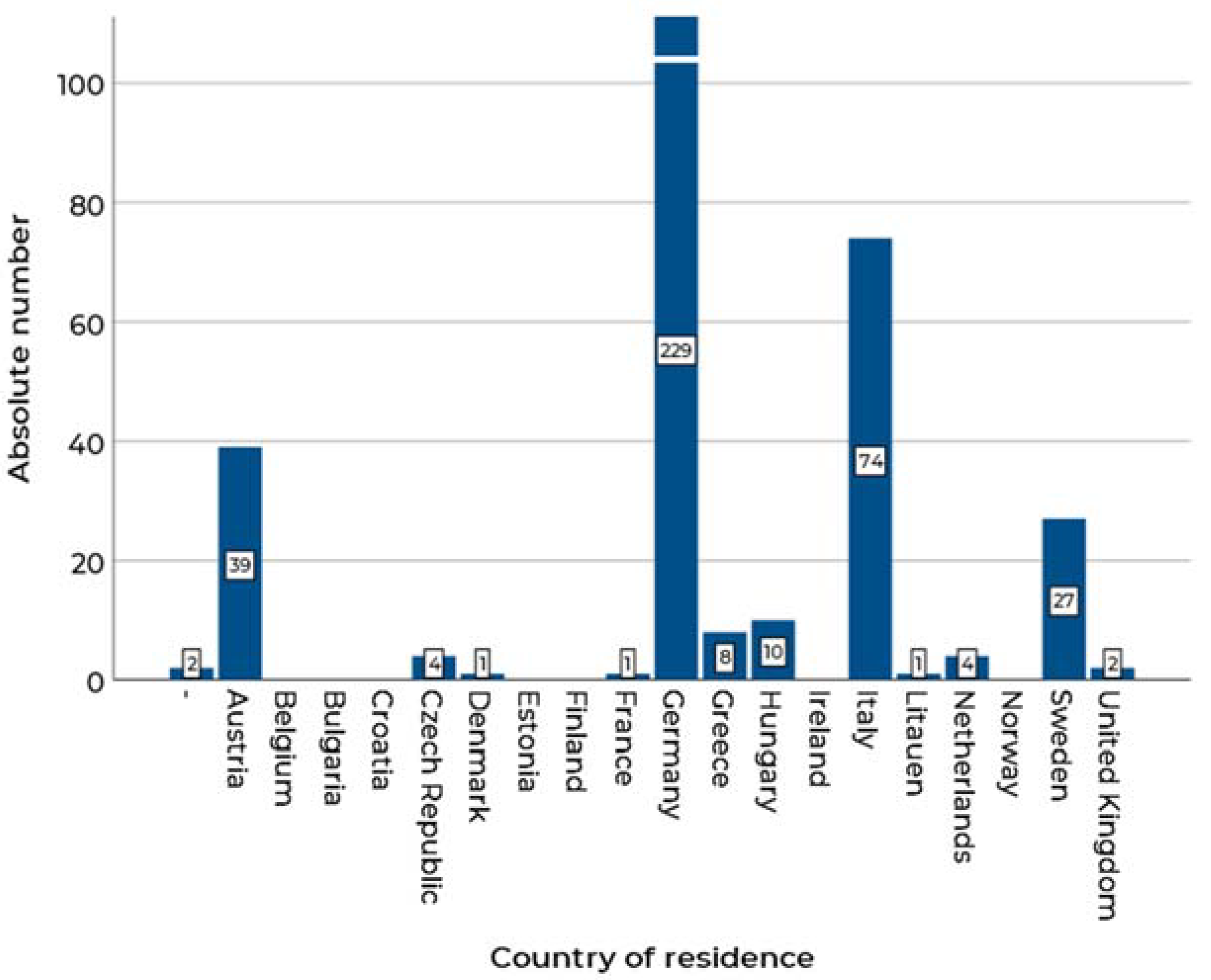
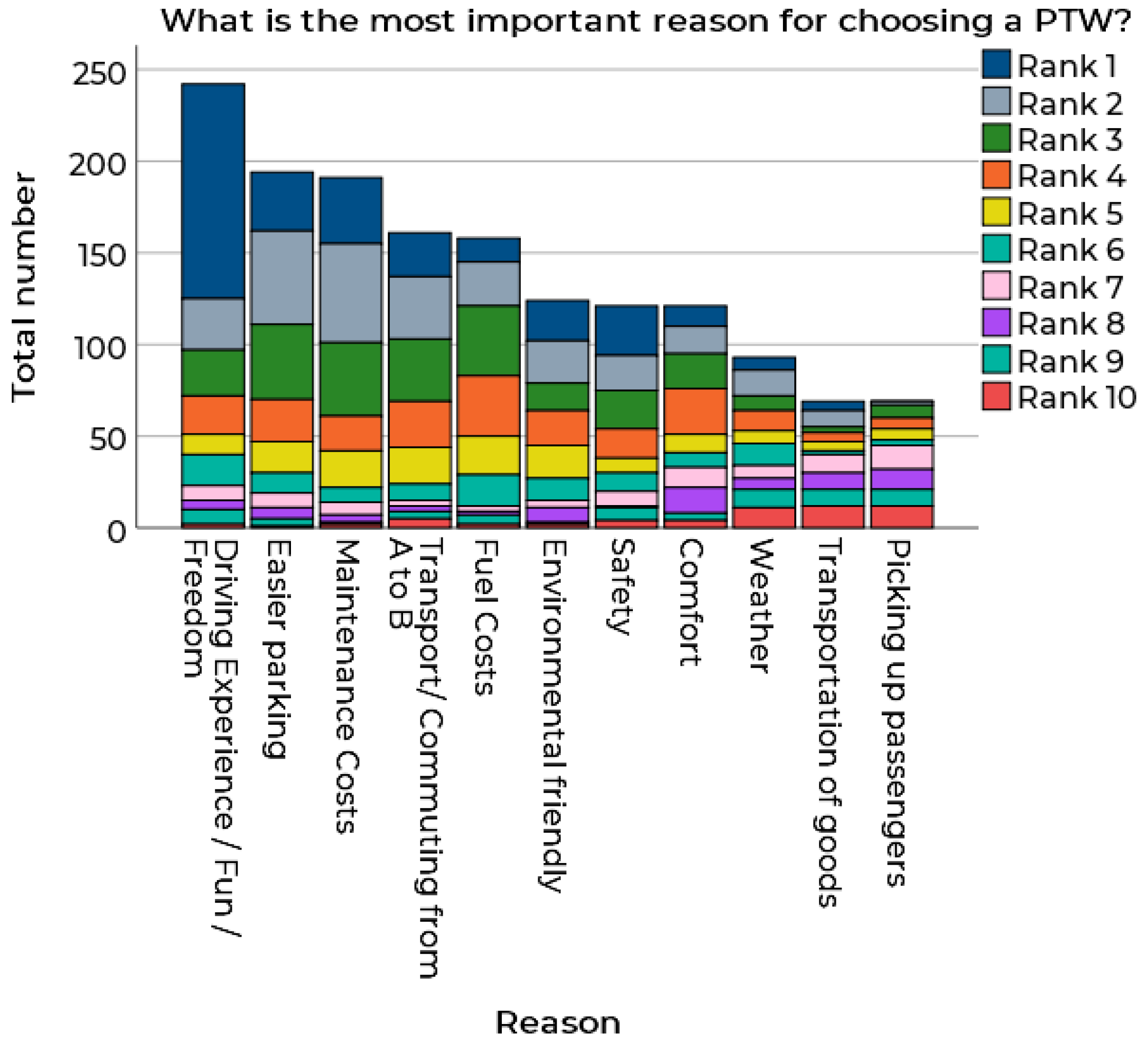



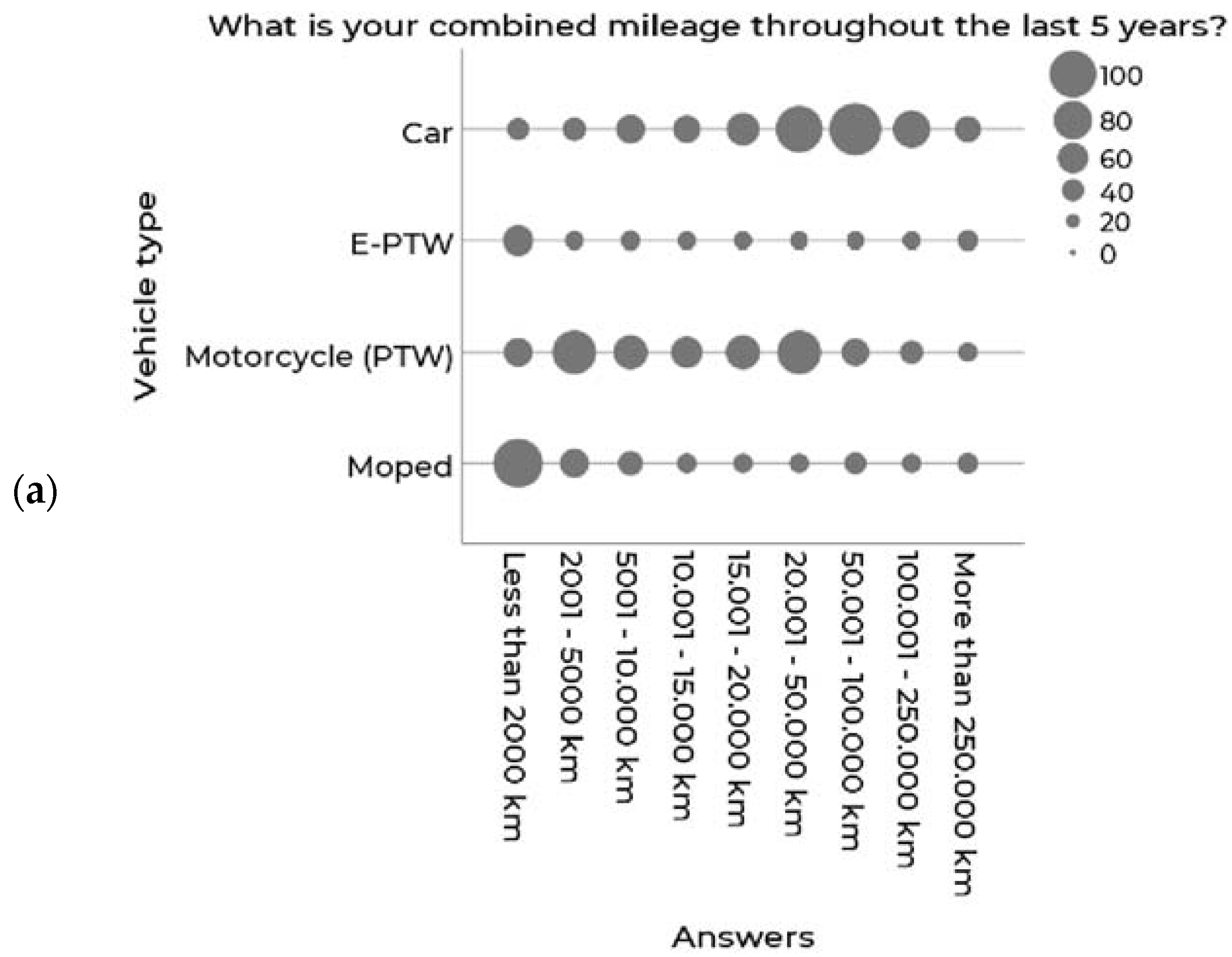



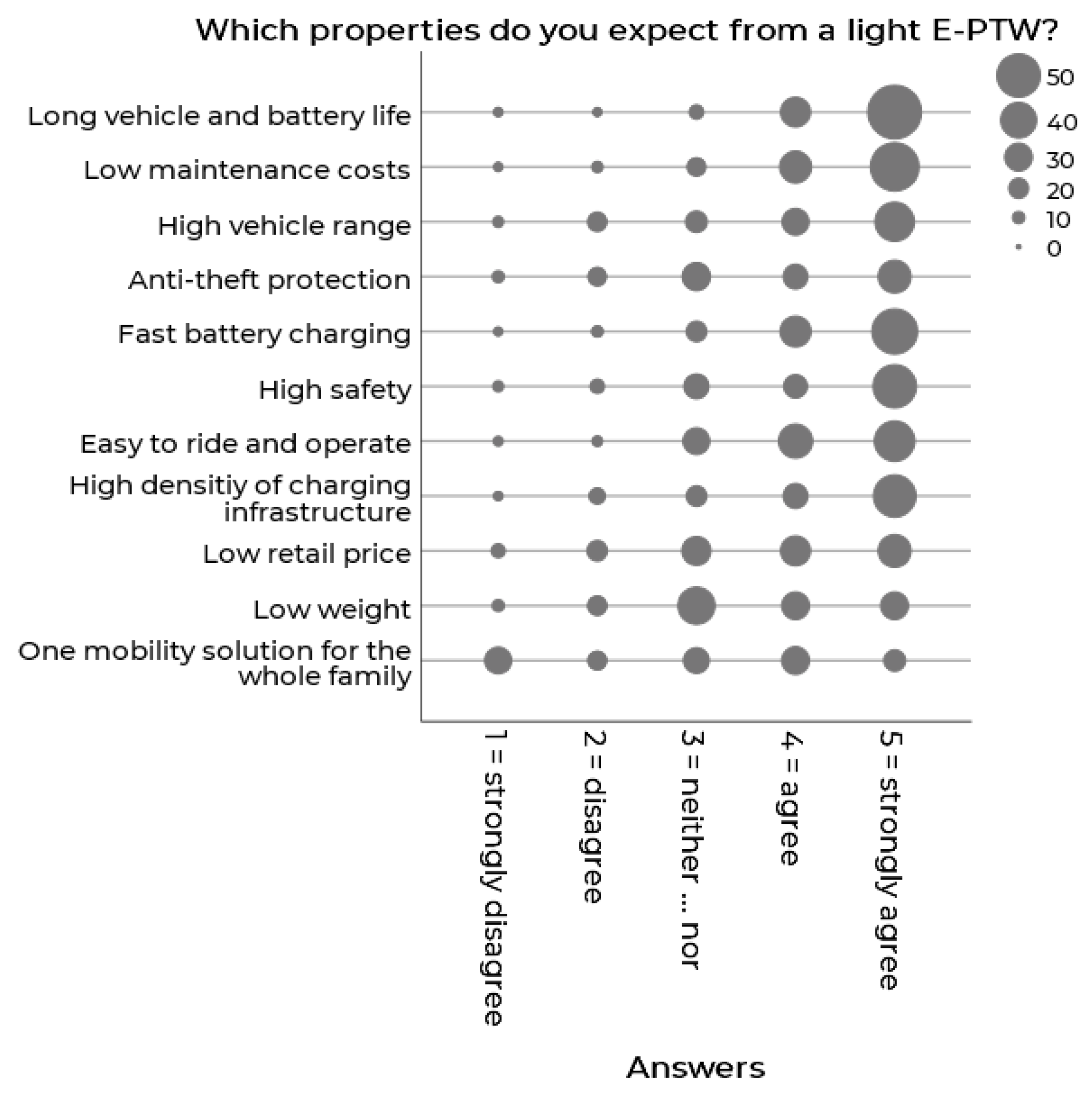
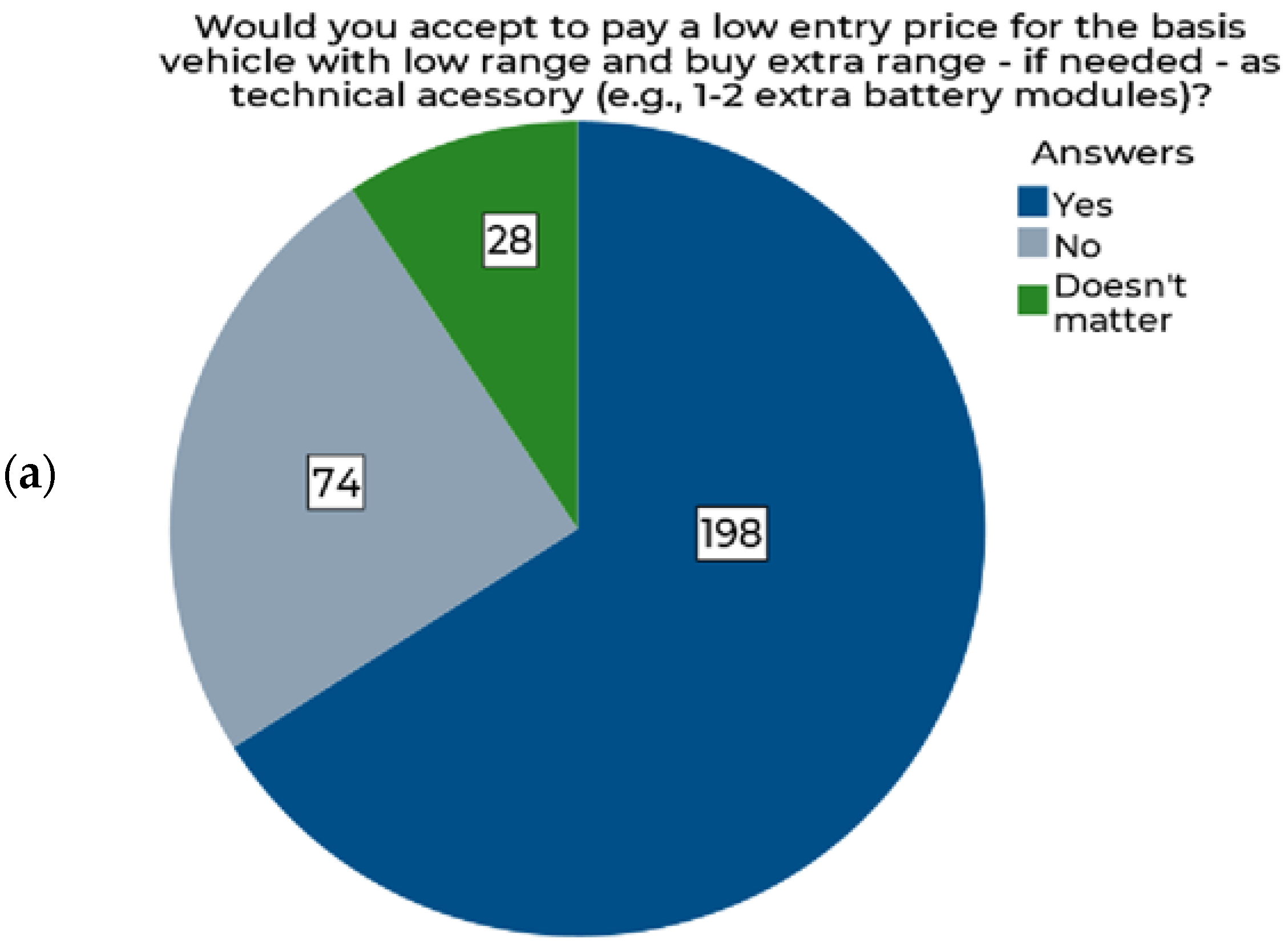
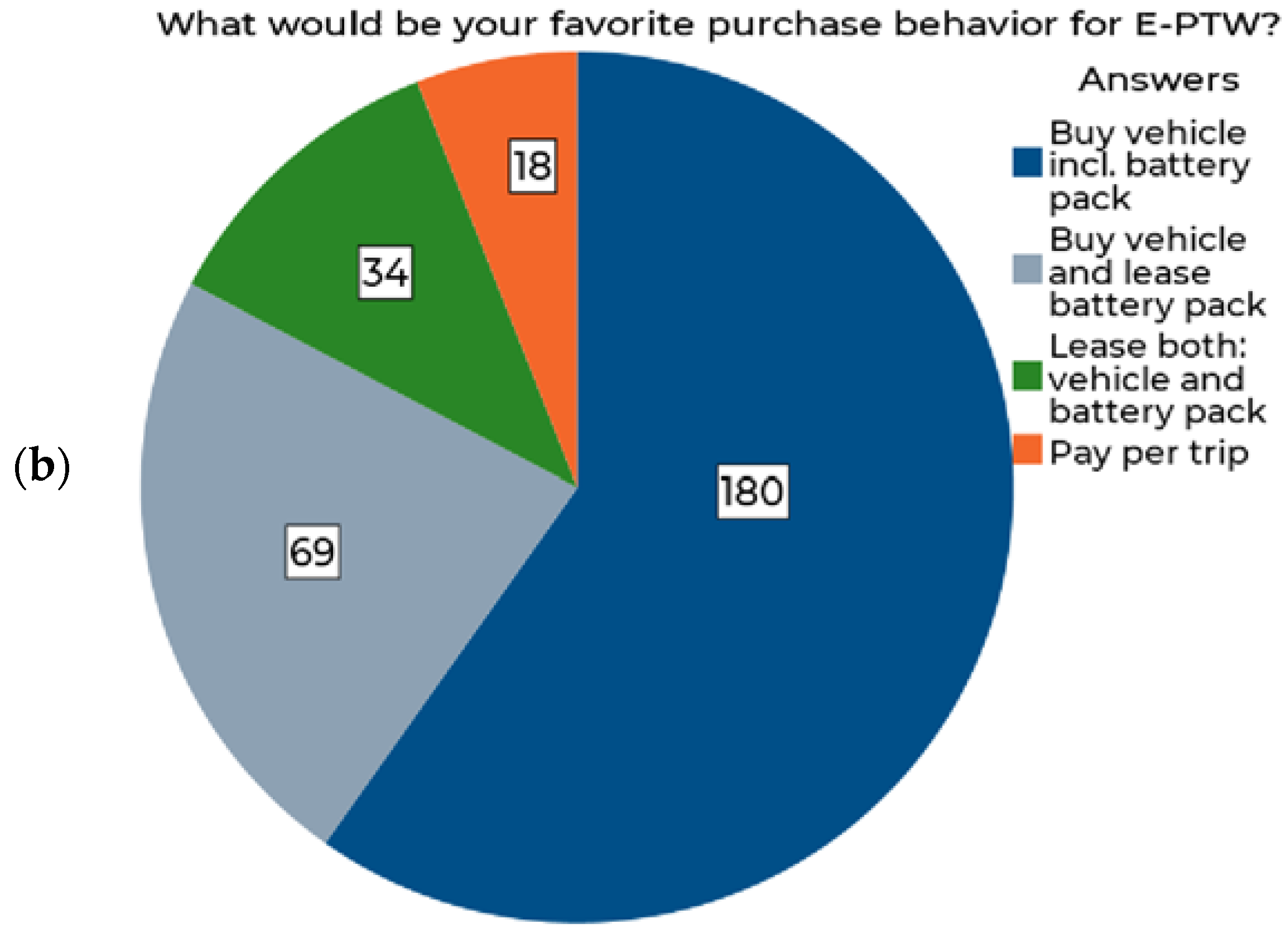
Publisher’s Note: MDPI stays neutral with regard to jurisdictional claims in published maps and institutional affiliations. |
© 2021 by the authors. Licensee MDPI, Basel, Switzerland. This article is an open access article distributed under the terms and conditions of the Creative Commons Attribution (CC BY) license (https://creativecommons.org/licenses/by/4.0/).
Share and Cite
Will, S.; Luger-Bazinger, C.; Schmitt, M.; Zankl, C. Towards the Future of Sustainable Mobility: Results from a European Survey on (Electric) Powered-Two Wheelers. Sustainability 2021, 13, 7151. https://doi.org/10.3390/su13137151
Will S, Luger-Bazinger C, Schmitt M, Zankl C. Towards the Future of Sustainable Mobility: Results from a European Survey on (Electric) Powered-Two Wheelers. Sustainability. 2021; 13(13):7151. https://doi.org/10.3390/su13137151
Chicago/Turabian StyleWill, Sebastian, Claudia Luger-Bazinger, Marcus Schmitt, and Cornelia Zankl. 2021. "Towards the Future of Sustainable Mobility: Results from a European Survey on (Electric) Powered-Two Wheelers" Sustainability 13, no. 13: 7151. https://doi.org/10.3390/su13137151
APA StyleWill, S., Luger-Bazinger, C., Schmitt, M., & Zankl, C. (2021). Towards the Future of Sustainable Mobility: Results from a European Survey on (Electric) Powered-Two Wheelers. Sustainability, 13(13), 7151. https://doi.org/10.3390/su13137151





